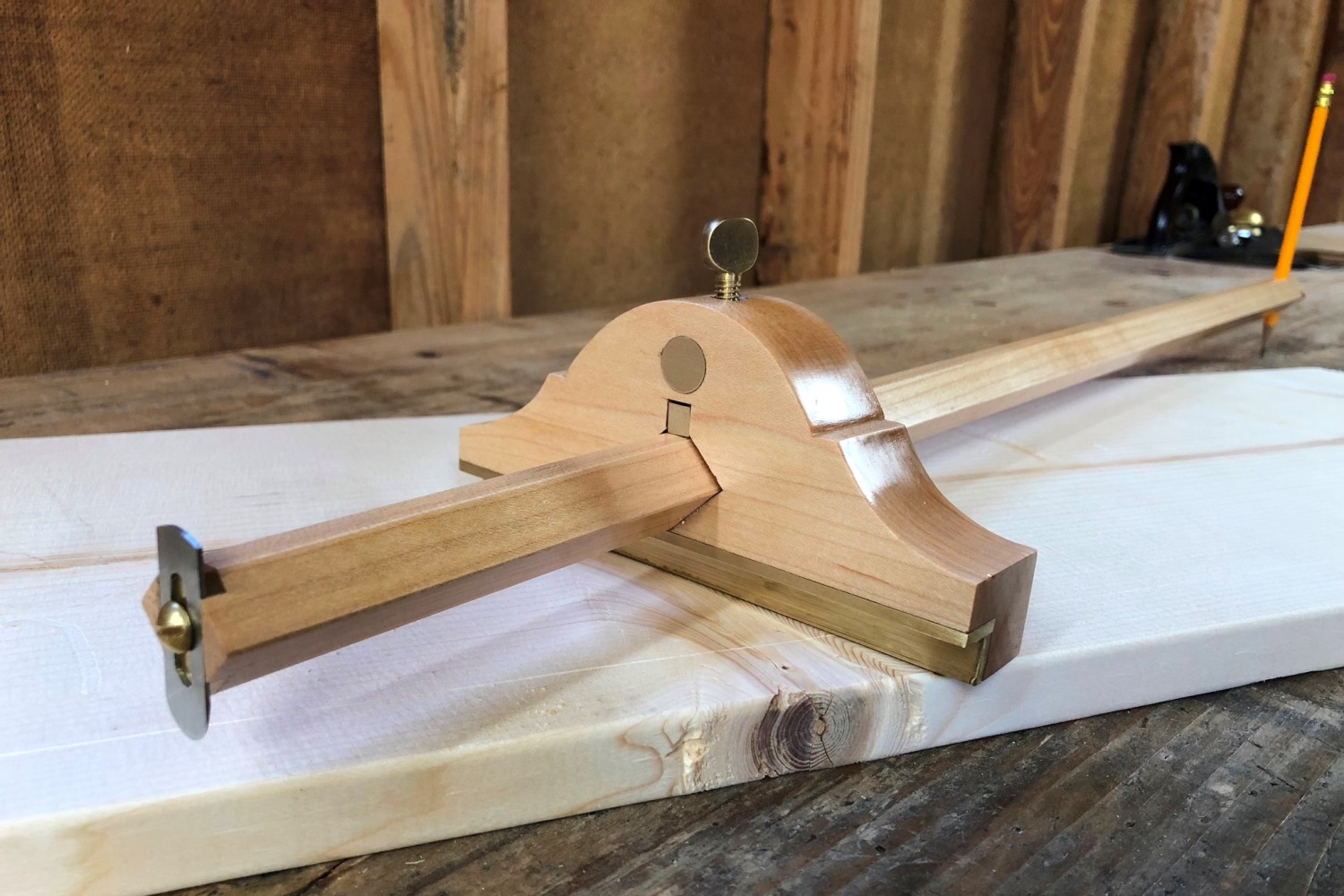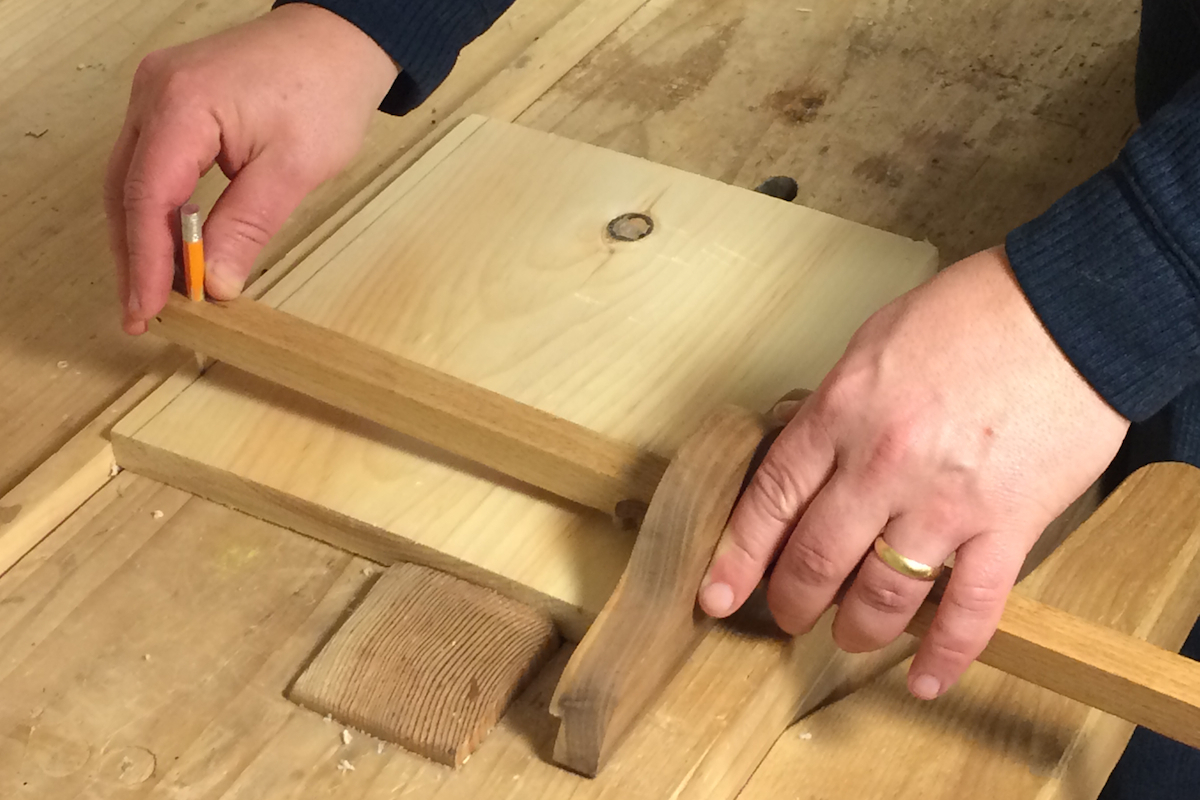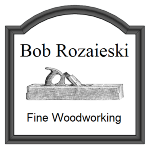
Panel Gauges
So far, I’ve talked about traditional marking gauges, mortise gauges, and cutting gauges. The last of the gauges is the biggest one of all. These are the panel gauges. As their name implies, they are used for marking wide boards and panels.

The traditional marking gauge typically has a beam of about 6″ to 8″ long. That’s because it is designed for marking short distances. So the marking gauge handles tasks like marking dovetail baselines, rabbets, stock thickness, and stock width for narrow components like small drawer sides and door frame parts. If you need to make a mark parallel to the edge of a board up to about 5 or 6 inches from the edge, then a standard marking gauge is the tool of choice.
However, when you need to mark wide surfaces, you trade your marking gauge in for a panel gauge. A panel gauge is basically like a marking gauge on steroids. The beam is longer, typically up to about 28″ long, making it capable of marking the width of all but the widest case sides and table tops. The beam is also thicker to better resist flexing when extended out far from the fence. The fence is also thicker and wider than a standard marking gauge in order to provide more reference on the edge of the board. The fence of a panel gauge also typically has a rabbet cut into its inside corner to allow it to sit over the corner of the board being marked. This provides for real solid registration when marking a wide board or panel.

Panel gauges can be made with either a pin or a knife for the marking implement. Most will also accommodate a pencil on the opposite end of the beam. All three work well with the right touch, but panel gauges are really two handed tools. You can use them single handed, but it’s usually a frustrating affair. I find it best to put the work on the bench top and use two hands on the gauge.

I prefer to brace the panel or board being marked against two stops. I typically use the planing stop to restrict movement parallel to the grain and a central stop between the boards of my bench top to keep the board from sliding laterally. Then both of my hands are free to control the panel gauge. I press the fence into the edge of the panel, which is restrained by the central planing stop. Then I make the mark toward the planing stop.
There’s no more efficient way to mark the width of a wide board or panel than with a panel gauge. If you rip your stock with a hand saw or a band saw, a panel gauge is an invaluable tool, especially when you need to mark multiple boards or panels to a consistent width.
Want to see how I made the panel gauge in the photos above? Look for my article in the August 2018 issue of Popular Woodworking Magazine.
Tag:Gauges

9 Comments
You mean that you will have a building explanation with only hand tools in PW of August ? Thx!
Yep, exactly!
I looked but couldn’t find it, any chance you can add a link? I would recommend you add the link to the YouTube channel too
It’s in the 2018 issue of the magazine. You can get a digital copy here.
thanks, just bought it
Thank you ! Will find it and buy it. I just discovered you with the podcast of Tenon & Mortises (Joshua Klein and Mike).
Last question… I looked for your matching planing video … couldn’t find it.
You can find it on my YouTube channel. Here you go https://youtu.be/JZAaCaOJhkg.
Thank you so much! I have so much problem doing the edges that I thought of buying th LN edge jointer (the old Stanley). Cheers !